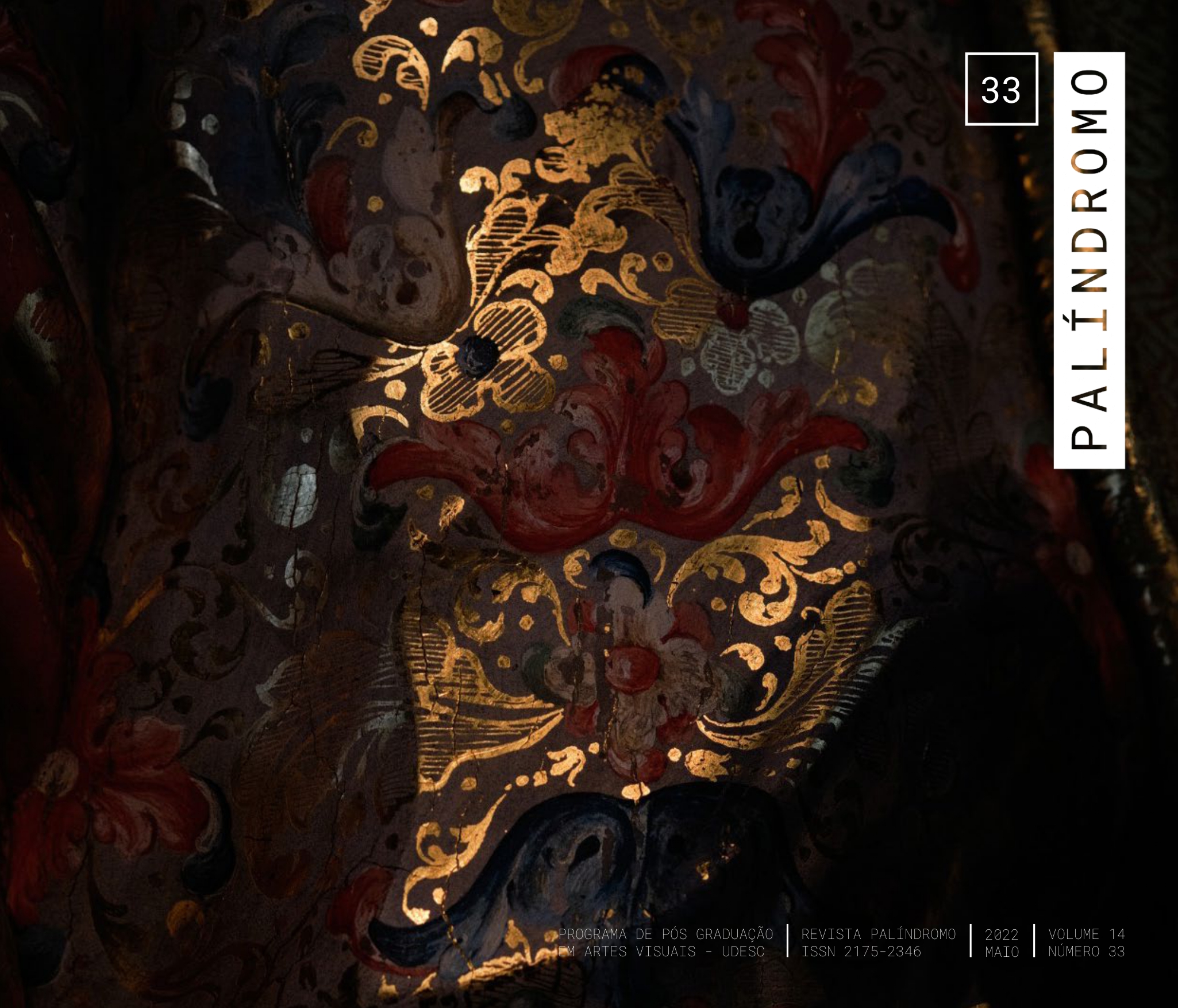Lais Myrrha: a arquitetura do mundo como matéria da arte
DOI:
https://doi.org/10.5965/2175234614332022296Parole chiave:
Lais Myrrha, Arte Contemporânea, Ruínas, Destruição, ImpermanênciaAbstract
O presente artigo propõe-se a analisar duas obras da artista brasileira Lais Myrrha, Teoria das Bordas (2007) e Dois pesos, duas medidas (2016), a fim de desvendar aspectos da sua construção poética. Os artefatos, que lidam com a desconstrução das fronteiras reais e simbólicas que organizam a nossa existência, com o avanço da técnica moderna e a ameaça de colapso que seu uso instrumentalizado implica, dão pistas do seu interesse em, revirando as ruínas que se acumulam no nosso presente, refletir, por meio das categorias de tempo e espaço, como são arquitetadas as coisas do mundo. Ao articular as imagens a partir de outras narrativas, ao mudar os referenciais do que é visto e dos sentidos que ordinariamente lhe são atribuídos, a artista bagunça a ordem das coisas, desordena as hierarquias e traz à tona a potência da destruição de tudo aquilo que parece necessário e inevitável.
Downloads
Riferimenti bibliografici
ANDRADE, Carlos Drummond de. Alguma poesia. São Paulo: Companhia das Letras, 2013.
BARDI, Lina Bo. Na Europa a casa do homem ruiu. In: RUBINO, Silvana; GRINOVER, Marina (Orgs.). Lina por escrito. Textos escolhidos de Lina Bo Bardi. São Paulo: Cosac Naify, 2009. p. 64-70.
BENJAMIN, Walter. Rua de mão única. Tradução de Rubens Rodrigues Torres Filho e José Carlos Martins Barbosa. (Obras Escolhidas v. 2). 6. ed. São Paulo: Brasiliense, 2012. p. 241- 243.
_______. Passagens. (v. 2). Tradução de Irene Aron e Cleonice Paes Barreto Mourão. Belo Horizonte: UFMG, 2018.
FERRO, Sérgio. Arquitetura e trabalho livre. Apresentação de Pedro Fiori Arantes. Posfácio de Roberto Schwarz. São Paulo: Cosac Naify, 2006.
GAGNEBIN, Jeanne Marie. Limiar, aura e rememoração: ensaios sobre Walter Benjamin. São Paulo: Editora 34, 2014.
MELO NETO, João Cabral. A educação pela pedra e outros poemas. Rio de Janeiro: Objetiva, 2008.
MYRRHA, Lais. Sobre as possibilidades da impermanência: fotografia e monumento. 2007. Dissertação (Mestrado em Artes da Escola de Belas Artes). Universidade Federal de Minas Gerais, Belo Horizonte, 2007.
________. Breve cronografia dos desmanches. Belo Horizonte: Gráfica Pampulha, 2013.
________. Entrevista com Lais Myrrha. Entrevista concedida a Leandro Muniz, junho de 2015. Disponível em: <https://www.academia.edu/14750664/Entrevista_com_Lais_Myrrha> Acesso em: 10 mar. 2019.
________. Entrevista com Lais Myrrha por Ilê Sartuzi no Auroras. Vídeo (44m49s). 2018. Disponível em: <https://www.youtube.com/watch?v=zFw1YLJfKu8> Acesso em: 02 set. 2019.
RANCIÈRE, Jacques. O desentendimento: política e filosofia. 2. ed. Tradução de Ângela Leite Lopes. São Paulo: Editora 34, 2018.
SIM GALERIA. Portfólio Lais Myrrha, 2018. Disponível em: <https://www.simgaleria.com/arquivos/1554233115-portfolio-lais-myrrha.pdf> Acesso em: 20 jul. 2019.
ZAMBRANO, María. Uma metáfora da esperança: as ruínas. Sopro, n. 37. Desterro: Cultura e Barbárie, out. 2010. Disponível em: < http://culturaebarbarie.org/sopro/n37.pdf> Acesso em: 19 dez. 2019.
Downloads
Pubblicato
Come citare
Fascicolo
Sezione
Licenza
Copyright (c) 2022 Ana Paula Freitas de Albuquerque

TQuesto lavoro è fornito con la licenza Creative Commons Attribuzione 4.0 Internazionale.
DECLARAÇÃO DE DIREITOS AUTORAIS
a. Os artigos publicados pela revista são de uso gratuito, destinados a aplicações acadêmicas e não comerciais. Todos os direitos autorais são atribuídos à revista. Os artigos cujos autores são identificados representam a expressão do ponto de vista de seus autores e não a posição oficial da Revista Palíndromo. O (s) autor (es) compromete-se sempre que publicar material referente ao artigo publicado no Palíndromo mencionar esta publicação da seguinte forma:
Este artigo foi publicado originalmente pela revista Palíndromo em seu volume (coloque o volume), número (coloque o número) no ano de (coloque o ano) e pode ser acessado em: http://www.revistas.udesc.br/index.php/palindromo
b. Plágio, em todas as suas formas, constitui um comportamento antiético de publicação e é inaceitável. A revista Palíndromo utiliza o software iThenticate de controle de similaridade


